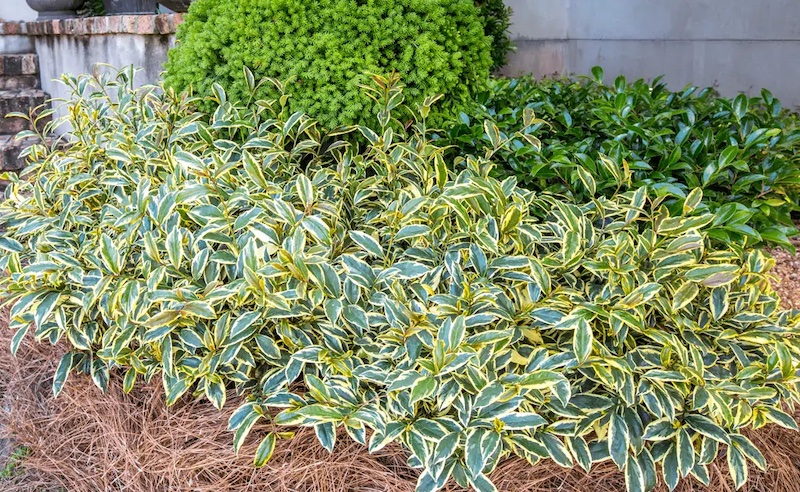Cleyera is a great, but often underused, broadleaf evergreen for the home garden. The large, glossy leaves have four seasons of interest that provide a backdrop for just about any garden plan. These shrubs prefer moisture-retentive soil that is also well draining. Soggy, heavy soils during any part of the year will cause issues of root rot, which over time will result in the decline of cleyera.

How To Tell If Cleyera Needs to be Watered
Because broadleaf evergreens typically have thick leaves, the symptoms of underwatering are not evident until the problem is advanced. Foliage may lose its glossiness and become dull with a matte appearance as a first symptom of dehydration. The leaves will also begin to curl inward, with older leaves browning and falling off the shrub. Cleyera shrubs that are planted in very well-drained soils are not likely to be overwatered, although if the soil stays extremely wet or waterlogged seasonally, this may be an issue. The symptoms of overwatering are drooping leaves, which may show signs of yellowing. Leaves that are yellowing in between the veins (interveinal chlorosis) indicate that the pH is not acidic enough and fertilizing may be necessary.
How Often To Water Cleyera
Cleyera are relatively drought tolerant once they are fully established in the garden. Supplemental watering for the first year is crucial for properly establishing a strong root system. Water once a week with at least 1 inch (10 gallons) of water during dry periods. Watering slowly with either a drip irrigation system or soaker hoses keeps the water near the root ball to prevent runoff and overhead spray.
After establishing, cleyera may still need supplemental watering, especially during the hotter summer months. Using a mulch of fine arborist chips, pine needles, or shredded bark will help the soil retain moisture and keep the temperature of the roots cooler. Watering during the early fall through winter may not be necessary if you garden in a zone with heavy seasonal rains. For drier areas in the winter, watering will still be needed while temperatures are above 45 degrees Fahrenheit.

Cleyera is not often grown in containers, although the smaller varieties would thrive as the anchor for a seasonal mixed planting. Good-draining potting mix will allow access to air circulation for the root system. Watering may need to be done frequently during hot and dry weather. Allow only the top 2-3 inches of soil to dry between watering sessions.
Best Time To Water Cleyera
Watering shrubs and trees early in the day while the soil is still damp from the overnight dew allows the soil to hold moisture more efficiently. Evaporation during the early morning hours is typically low, helping plants to prepare for warmer or windy daytime weather. Watering will need to continue during the winter in any USDA zones with mild temperatures and daytime temperatures over 45 degrees F. Supplemental watering may also be needed during windy periods or when humidity is low in the summer. Broadleaf evergreens are prone to losing moisture through their large leaves during these conditions.
How to Water Cleyera
Step 1 - Observe if the plant has any symptoms of over or underwatering.
Feel the soil around the rootball to see if it is dry. If it is dry 3-4 inches below the surface, watering is needed.
Step 2 - Water with drip irrigation or soaker hoses.
Soaker hoses and drip irrigation target water close to the root ball, greatly reducing evaporation and ensuring the foliage stays dry.
Step 3 - Allow for at least one inch of water a week.
If there is no natural rainfall, apply one inch of water (10 gallons) once a week.
Step 4 - Mulch to conserve moisture.
Finely shredded organic material or compost heaped around the root zone helps the soil to retain moisture and remain cool.
Cleyera Watering Tips
- Water early in the day
- Use efficient methods to water such as soaker hoses or drip irrigation
- Allow for one inch or more a week of natural rainfall or supplemental watering
- Mulch helps cool and keep the soil moist
 |
Author Robbin Small - Published 4-25-2023 |
